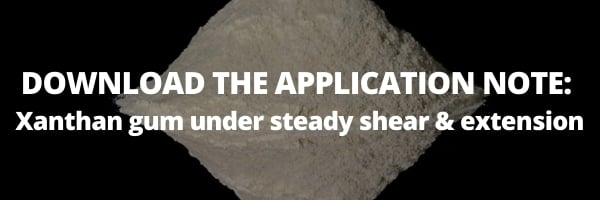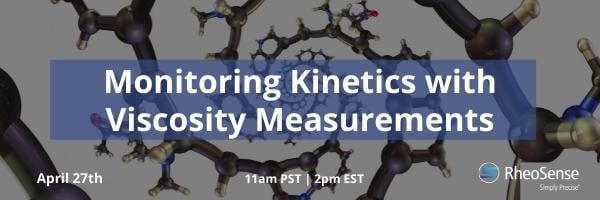A variety of complex fluids undergo microstructural changes that evolve over the course of minutes to hours. Some examples of these changes include covalent bond formation or cleavage and self assembly driven by physical associations such as hydrogen bonding or electrostatics. The steady shear viscosity is highly sensitive to the fluid microstructure. Therefore, when the time dependence or kinetics of these processes are long compared to the measurement time scale, viscosity can be used to monitor their progression. In general, viscosity will increase with time when bonds are formed or structures are building and decrease when bonds are cleaved or structures are broken down.

There are many application areas where viscosity can be utilized to monitor structural evolution and the associated kinetics. For example, the extent of cross-linking can be tracked in a two component epoxy adhesive after initial mixing. Aggregate or cluster formation can be followed in a particle dispersion or protein formulation when the pair interaction potential includes a modest repulsive or stabilizing barrier. Polymer degradation can also be monitored to assess the impact of the environment on the macromolecule stability.
An interesting case study is the degradation of acidic guar gum solutions at elevated temperatures. Guar gum is a galactomannan polyssaccharide common in the food industry because of its thickening, emulsifying, and stabilizing benefits. Polyssacharides are also commonly used as rheology modifiers in a range of other industries including pharmaceutical, medical, cosmetic, and petrochemical. It is advantageous to be able to quantify the thermal degradation of polyssacharides to predict stability and product performance.
In our April webinar, we demonstrate how viscosity is used to monitor the thermal degradation kinetics of acidic guar gum solutions. The VROC® initium one plus automated viscometer provides an enclosed environment to track the viscosity decrease over multiple hours without evaporation concerns. A single point intrinsic viscosity analysis can also be used to estimate the reduction in molecular weight as a function of time, pH, and temperature.
If you want to learn more about monitoring kinetics with viscosity measurements, register and join us for the webinar on Wednesday, April 27th.
Written by: Chrystian Ochoa, RheoSense Application Scientist, and Stacey Elliott, RheoSense Principal Scientist



